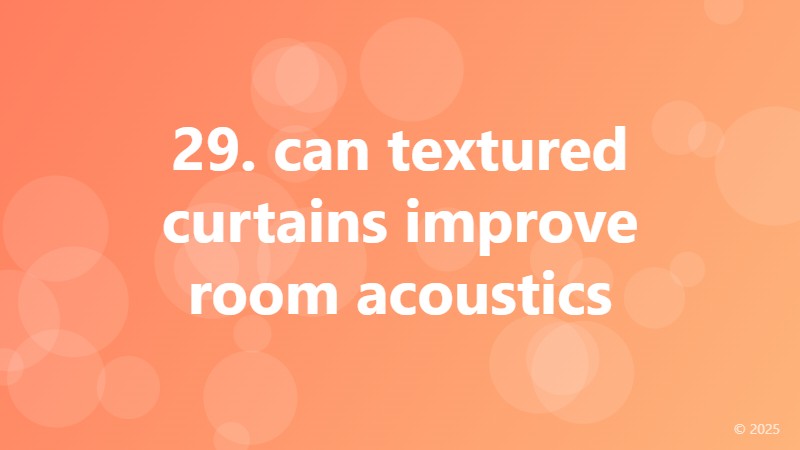29. can textured curtains improve room acoustics

How Textured Curtains Can Enhance Room Acoustics
When it comes to improving room acoustics, many people focus on installing sound-absorbing materials, such as acoustic panels or soundproofing blankets. However, there's another often-overlooked solution that can make a significant difference: textured curtains. Yes, you read that right – textured curtains can do wonders for room acoustics. In this article, we'll explore how they work and why they're an excellent addition to any room.
The Science Behind Textured Curtains and Acoustics
Textured curtains work by scattering sound waves in different directions, rather than allowing them to bounce back and forth between surfaces. This scattering effect helps to break up the sound waves, reducing echo and reverberation. The texture of the curtains also helps to absorb some of the sound energy, further reducing the overall sound level.
In essence, textured curtains act as a diffuser, dispersing sound waves in multiple directions and preventing them from building up and causing echo. This makes them particularly effective in rooms with high ceilings, hardwood floors, or other reflective surfaces that can exacerbate echo and reverberation.
Benefits of Textured Curtains for Room Acoustics
So, what are the benefits of using textured curtains to improve room acoustics? Here are just a few:
Reduced echo and reverberation: By scattering sound waves and absorbing some of the sound energy, textured curtains can significantly reduce echo and reverberation in a room.
Improved sound clarity: By reducing echo and reverberation, textured curtains can help improve sound clarity, making it easier to understand speech or appreciate music.
Enhanced ambiance: Textured curtains can also enhance the ambiance of a room, creating a cozy and intimate atmosphere that's perfect for relaxation or entertainment.
Choosing the Right Textured Curtains for Room Acoustics
Not all textured curtains are created equal, however. When choosing curtains for room acoustics, look for the following features:
Thick, heavy fabric: Thicker, heavier fabrics are more effective at absorbing sound energy and scattering sound waves.
Complex texture: Curtains with complex textures, such as those featuring a combination of smooth and rough surfaces, are more effective at diffusing sound waves.
Pattern and design: Look for curtains with patterns or designs that feature irregular shapes or angles, as these can help scatter sound waves more effectively.
In conclusion, textured curtains are a simple yet effective way to improve room acoustics. By scattering sound waves and absorbing sound energy, they can reduce echo and reverberation, improve sound clarity, and enhance the ambiance of a room. So why not give them a try?